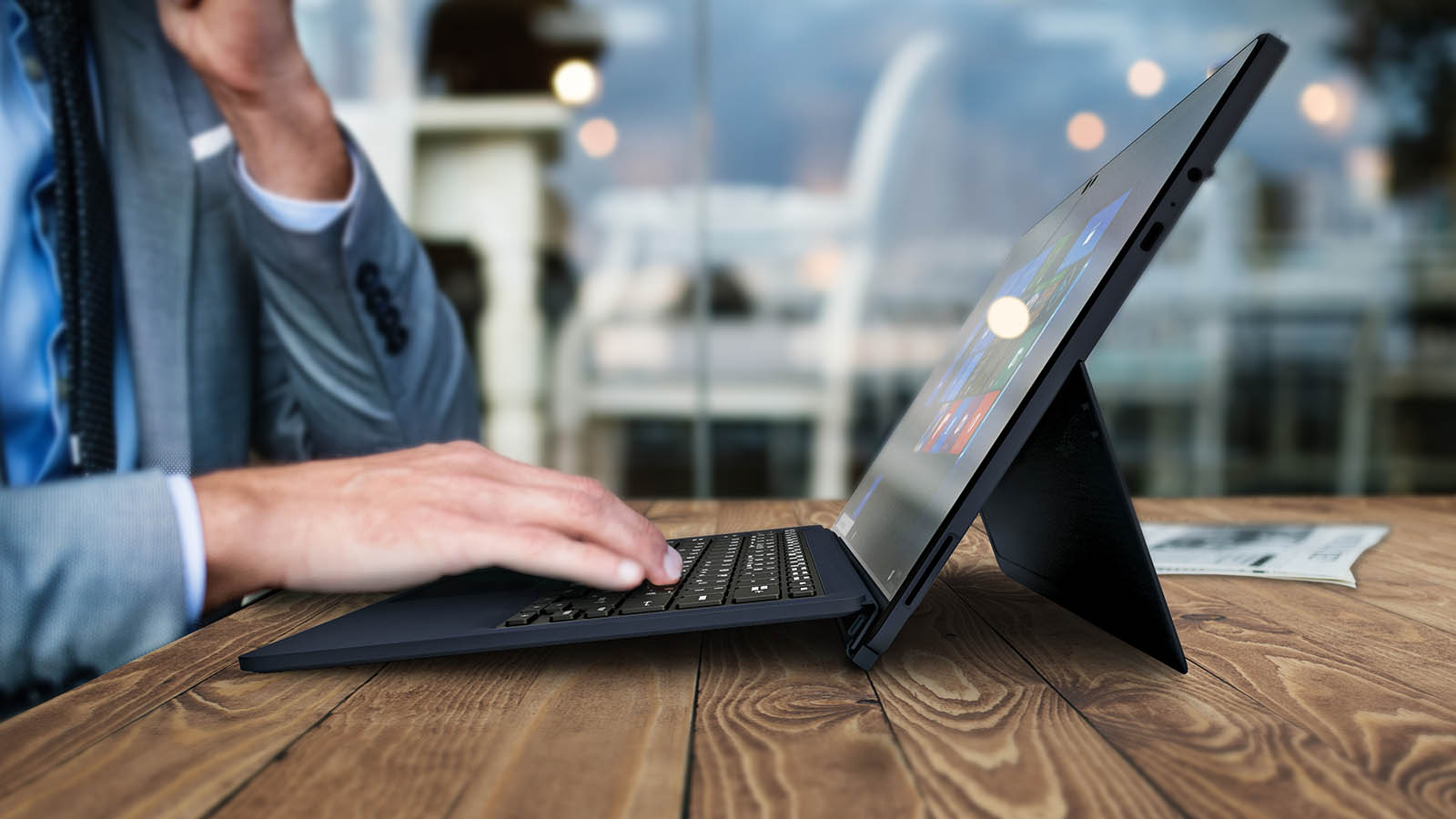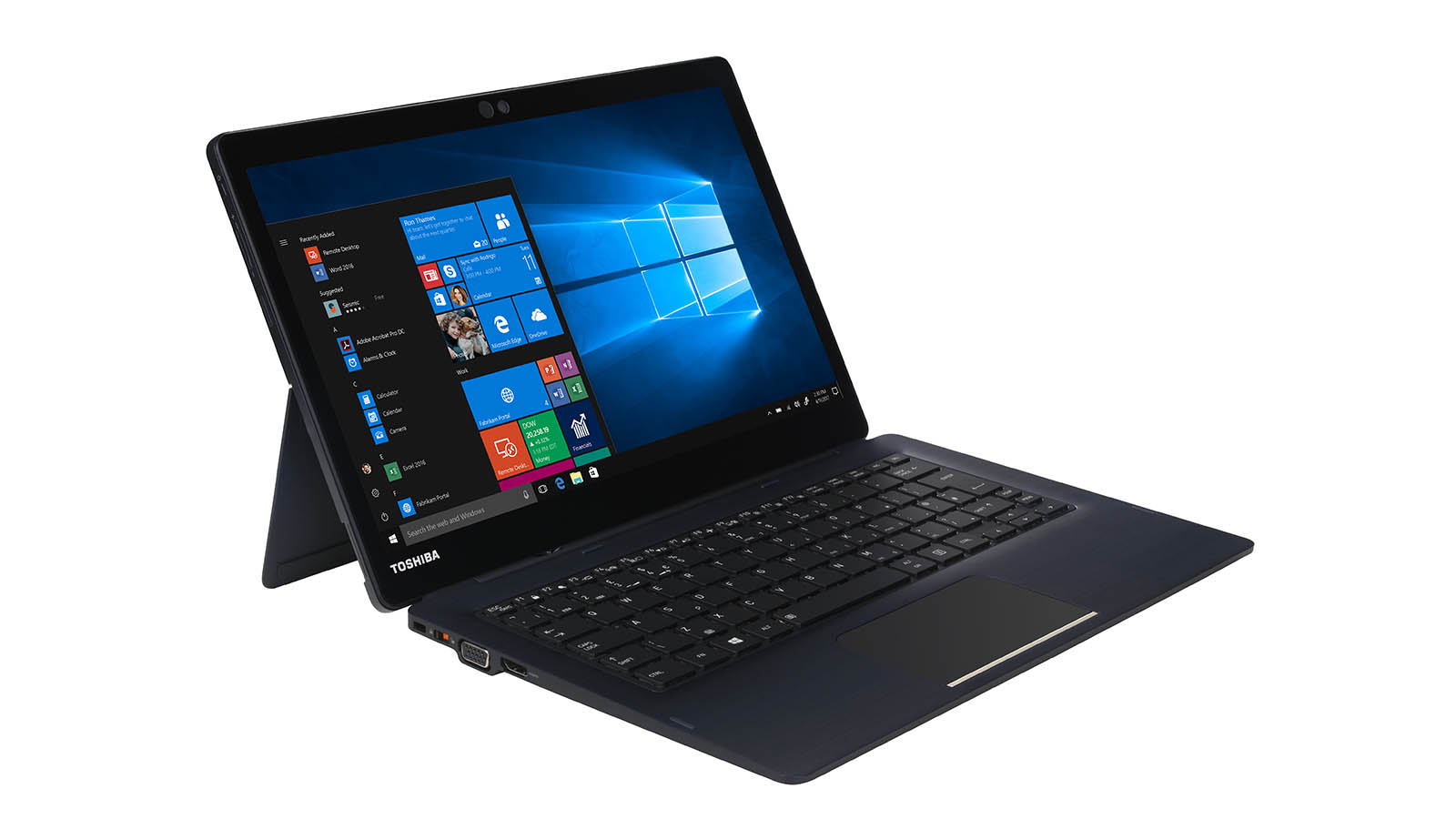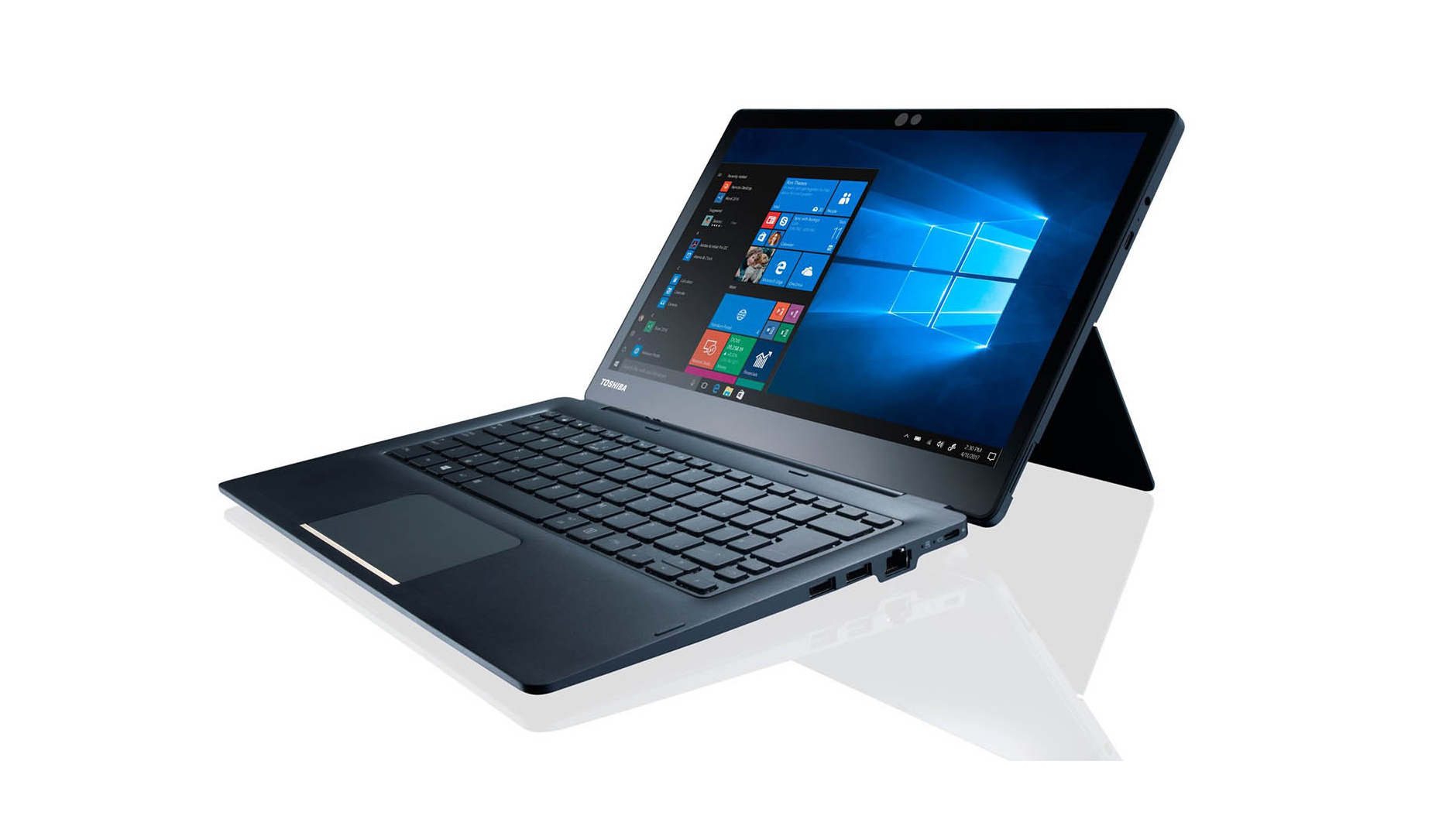Why you can trust TechRadar
Usage and performance
There is an issue with the concept behind this machine, and those others that aim to compete with the Microsoft’s Surface Book 2 and its ilk.
As it’s difficult to see what advantages a Windows tablet has above an Android or Apple one, given the huge difference in cost and the strength of these respective application ecosystems.
That’s a problem for the Toshiba Portege X30T-E in particular, due to the compromises were made to enable this machine to transform into a tablet.
Here’s how the Toshiba Portégé X30T-E-13H performed in our suite of benchmark tests:
Passmark: 2,935
Passmark CPU: 6,301
CPU-Z: 270 (single-thread); 1,710 (multi-thread)
Geekbench 4: 4,771 (single-core); 13,270 (multi-core)
Cinebench: OpenGL: 40.52 fps CPU: 306
PCMark 8 (Home Test): 3,434
CrystalDiskMark: 3,298MB/s (read); 2,395MB/s (write)
Novabench: 1458
Atto: 2,864MBps (read, 256mb); 2,398MBps (write, 256mb)
Sisoft Sandra (KPT): 1.75
3DMark: Sky Diver: 3,471; Fire Strike: 924; Time Spy: 349
The first of these is that because nearly all the computing hardware is in the screen component, there isn’t any natural balance. Tilting the screen back much beyond the vertical causes it to fall over backwards, and the only way to stop it doing that is to deploy the kick-stand from the tablet.
And, despite Toshiba promotional images suggesting otherwise, balancing this on your lap to work, as with the Surface machines, is very difficult.
Along with the machine, Toshiba included some of the accessories for this design including a lightweight Travel keyboard that makes the X30-T-E decidedly Surface-like.
Using one reduces the weight overhead by 200 grams, but you've still left a reduced battery life for a small weight advantage.
Switching the machine into pure tablet mode comes with a slew of problems, not least that you are dispensing with many of the most useful ports on the keyboard part, but also waving a not-so-fond farewell to at least a third, if not more, of the battery capacity.
The metal prongs that stick out of the keyboard also don’t make an easy device to transport when not combined the screen component.
The review machine contained the very top Intel hardware available on this series, and for the typical user, that much power is overkill but only in processing terms.
Having recently reviewed a few AMD Ryzen based machines we’ve been acutely aware that Intel UHD Graphics 620 video technology is showing its age.
That Intel hasn’t anything better to 8th generation customers investing this much in a machine is disappointing, and it’s a shortfall that desperately needs addressing.
One inclusion that gave the review machine a dramatic performance boost was a good quality NVMe drive, the Samsung PM981. This drive is unlike the very mediocre devices that many machine makers are including, and delivers a blisteringly fast NVMe reading and writing experience.
With this in place, the X30T-E boots, installs and runs applications in a very snappy and responsive way.
As part of our testing with also analysed the display using DataColor Spyder 5 calibrator and found that this is one of the better panels we’ve seen on any Ultrabook.
It managed 96% of the sRGB gamut, and 74% of AdobeRGB. And, at 100 percent brightness, the backlight generated a very respectable 300.7 cd/m2.
The only flaw in the display technology is that for whatever reason the backlight isn’t as uniform as it should be. The lower left corner is 26 percent darker than the top right, and it is distinctly darker across the bottom third than the middle or top.

Battery life
The choice to split the battery capacity between the tablet part and the Keyboard Dock makes this design either very good when it comes to battery lifespan or average for an Ultrabook, depending on how you use it.
With all battery capacity at its disposal, this Portégé can run at full speed for nearly six hours, which would easily equate into a full working day for most users.
Detaching the keyboard drops that capability by roughly a third to 3 hour and 56 minutes, making it less likely that you would get through the day on a single charge.
That makes the travel keyboard less useful for travellers than the standard one, we’d contest.
Wouldn’t it be great if Toshiba sold the battery enabled keyboards as an accessory?

Final verdict
If you have a niche use for this type of machine, then this one is beautifully engineered and well specified unless you like 4K graphics. But for us, it demonstrates perfectly that tablets aren’t the workhorses of mobile computing like a built-for-purpose laptop, such as the outstanding Portégé X30-E-133, can be.
That machine offers an even longer battery life, has the same screen size and processor, is lighter, can be used on a lap and it costs less.
Compared with the Microsoft Surface Book 2 the X30T-E-113 seems relatively cheap, though it is slightly more than the Surface Pro 6 with 16GB of RAM, a Core i7 CPU and 1TB of storage.
But honestly, all these machines are hampered by their split personalities.
We know which we’d prefer if we had something important work to do away from the office, and it’s the not a machine trying to be two things and failing to be exceptional at either job.
- Also check out the best business laptops
Mark is an expert on 3D printers, drones and phones. He also covers storage, including SSDs, NAS drives and portable hard drives. He started writing in 1986 and has contributed to MicroMart, PC Format, 3D World, among others.

